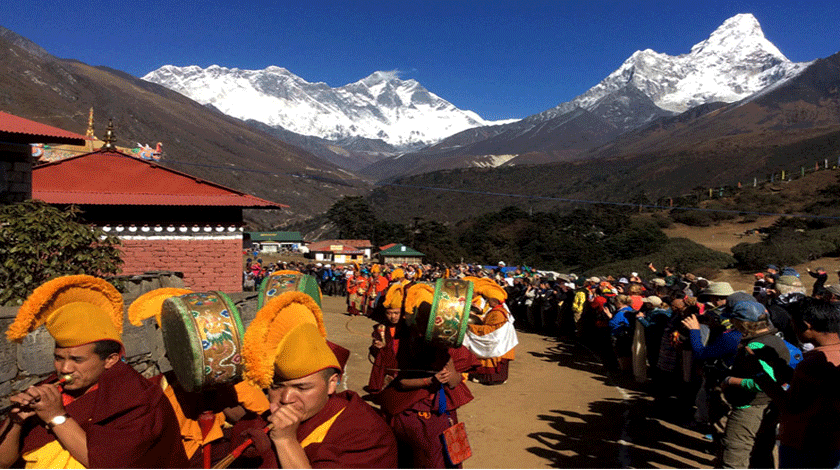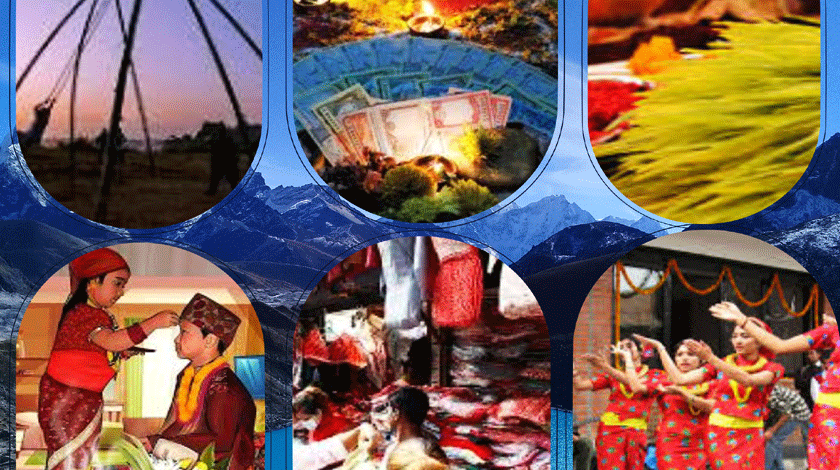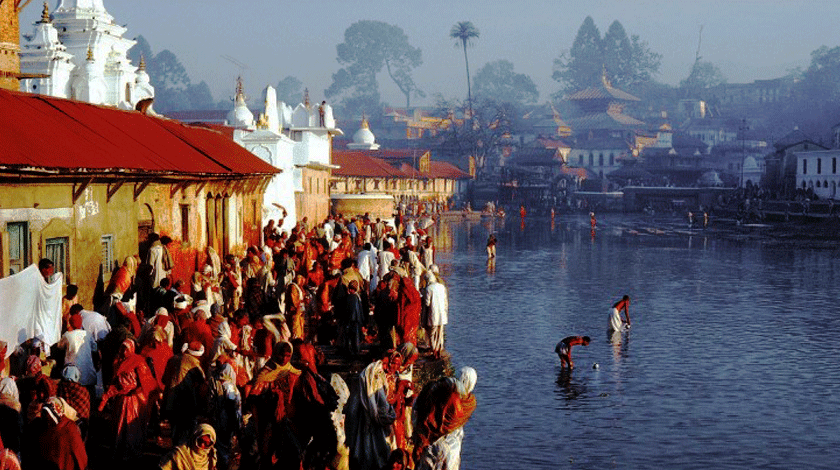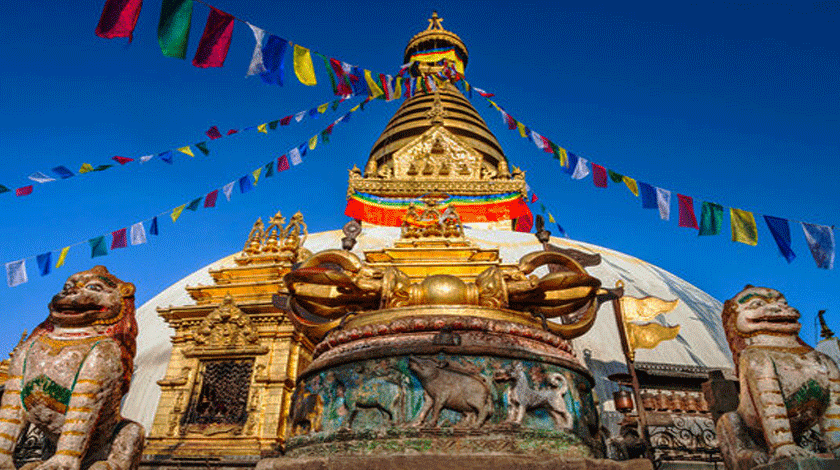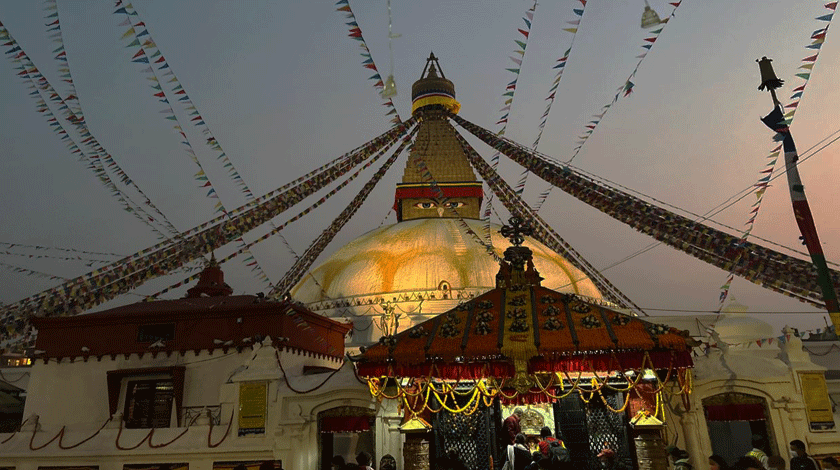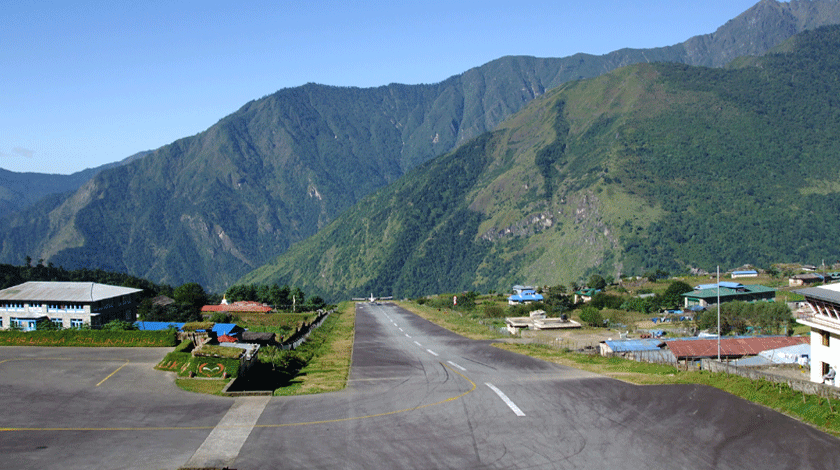Sagarmatha National Park Nepal
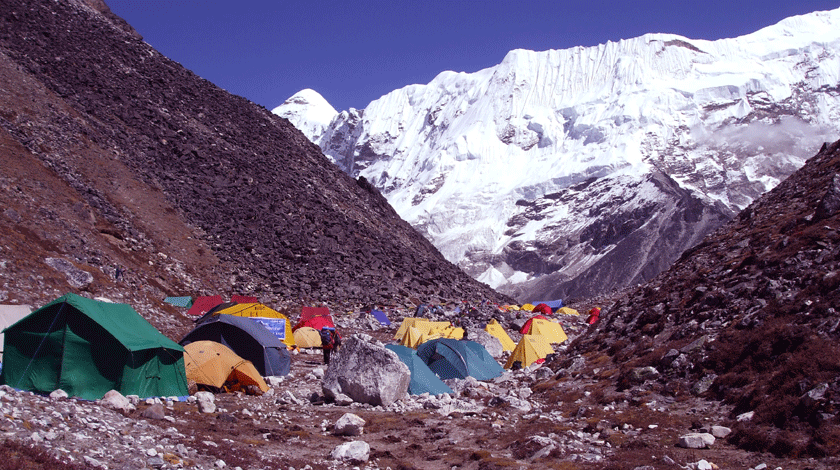
Discovering the Wonders of Sagarmatha National Park of Nepal
Sagarmatha National Park in Nepal, the heart of the Himalayas, has breathtaking beauty and diverse ecosystems. This park, a UNESCO World Heritage Site since 1979, is home to the world’s tallest peak, Mount Everest, locally known as Sagarmatha. Sagarmatha National Park covers 1,148 square kilometers, while Langtang National Park covers 1,710 square kilometers, which is 562 square kilometers more than Sagarmatha, the park is located in the Solukhumbu District of Nepal. Consequently, it attracts adventurers, nature enthusiasts, and cultural explorers alike. Moreover, the park offers a unique blend of natural wonders and rich cultural heritage, making it a must-visit destination for those seeking an unforgettable experience.
Sagarmatha National Park is the highest National Park in world whereas the first National Park of Nepal is Chitwan National Park.
Geographical Features and Climate
The climate in Sagarmatha National Park is influenced by the Indian monsoon, with heavy rainfall from June to September. The best time to visit is during the pre-monsoon (March to May) and post-monsoon (October to November) seasons when the weather is relatively stable and the skies are clear, offering stunning views of the Himalayas.
Flora: A Botanical Paradise
Sagarmatha National Park hosts a rich diversity of plant life, with vegetation varying according to altitude and climatic conditions. In the lower regions, up to 3,500 meters, lush forests of pine, hemlock, and fir dominate the landscape. Additionally, during the spring, rhododendron forests add a splash of color, as their vibrant blooms range from white and pink to deep red. Consequently, these seasonal changes enhance the park’s natural beauty, making it a visually stunning destination throughout the year.
As the altitude increases, the forests give way to alpine scrub and meadows. Here, juniper and small tall rhododendrons tree dominate the landscape, accompanied by a variety of grasses and herbs. These high-altitude meadows are critical grazing grounds for the park’s wildlife, providing essential resources for species like the Himalayan tahr and musk deer.
Above 5,000 meters, the landscape becomes stark and barren, with only hardy alpine plants able to survive the harsh conditions. These include cushion plants, lichens, and mosses, which cling to life on rocky outcrops and scree slopes.
Fauna: A Haven for Wildlife
Sagarmatha National Park is renowned for its diverse and unique wildlife, some of which are rare and endangered. The park’s varying altitudes and ecosystems provide habitats for a wide range of species.
Mammals
One of the most iconic animals of Sagarmatha National Park is the snow leopard, a solitary and elusive predator that roams the high-altitude regions. In addition to the snow leopard, the park supports populations of the red panda, an endangered species that inhabits temperate forests and primarily feeds on bamboo.
Furthermore, the park is home to other notable mammals, including the Himalayan tahr, a large ungulate frequently seen grazing on steep slopes. Similarly, the musk deer, which is hunted for its valuable musk gland, also resides in the park. Moreover, the Himalayan black bear, the yellow-throated marten, and several species of small mammals like pikas and marmots contribute to the park’s diverse wildlife. Consequently, Sagarmatha National Park offers a rich tapestry of animal life for visitors to discover.
Birds
Sagarmatha National Park is a paradise for birdwatchers, with over 100 species recorded in the area. The Impeyan pheasant, Nepal’s national bird, is a common sight, recognized by its iridescent plumage. Other bird species include the blood pheasant, red-billed chough, and several types of eagles and vultures.
The park’s varied habitats, from forests to alpine meadows, support a rich avian diversity, making it an Important Bird Area (IBA) of global significance.
Cultural Heritage: The Sherpa People
Beyond its natural wonders, Sagarmatha National Park is filled with cultural richness, primarily due to the Sherpa community that calls this region home. The Sherpas, renowned for their mountaineering expertise, have lived in the area for centuries, adapting to its harsh environment and developing a unique culture.
The Sherpa villages within the park, such as Namche Bazaar, Khumjung, and Pangboche, offer visitors a glimpse into their traditional way of life. These villages are known for their vibrant festivals, colorful prayer flags, and intricately carved mani stones.
Tengboche Monastery: One of the most significant cultural sites in the park is the Tengboche Monastery, the largest gompa in the Khumbu region. Situated at 3,867 meters, it is a spiritual center for the Sherpas and hosts the annual Mani Rimdu festival, a colorful event that attracts both locals and tourists.
Trekking and Mountaineering: An Adventurer’s Paradise
Sagarmatha National Park is a mecca for trekkers and mountaineers visiting from around the Globe. The park offers many best trekking routes including short Everest trek to longer trails that cater to different levels of experience and fitness.
Everest Base Camp Trek
The Everest Base Camp trek is one of the most popular trekking routes in the world, offering adventurers a chance to get up close to the world’s highest peak. The trek takes visitors through picturesque Sherpa villages, past ancient monasteries, and across suspension bridges over roaring rivers. The journey culminates at Everest Base Camp, where climbers prepare for their ascent of the mighty mountain.
Three Passes Trek
For those seeking a more challenging adventure, the Three Passes trek offers a circuit that crosses three high-altitude passes: Kongma La, Cho La, and Renjo La. This trek provides unparalleled views of the Everest range and includes visits to iconic locations such as Gokyo Lakes and Kala Patthar, a vantage point renowned for its panoramic views of Everest.
Conservation Efforts: Preserving a Natural Legacy
Preserving the ecological and cultural integrity of Sagarmatha National Park is crucial. The Department of National Parks and Wildlife Conservation manages the park, working alongside local communities and international organizations to tackle environmental challenges.
Sustainable Tourism: The park emphasizes sustainable tourism practices to minimize the environmental impact of visitors. They implement programs to manage waste, protect wildlife habitats, and promote eco-friendly trekking practices.
Climate Change: The park leads efforts to combat climate change, which poses significant threats to its fragile ecosystems. Researchers and conservationists are addressing critical issues such as glacial melt, changing weather patterns, and habitat loss through targeted initiatives.
Conclusion
Sagarmatha National Park offers unparalleled beauty, rich biodiversity, and cultural depth. Its towering peaks, diverse ecosystems, and vibrant Sherpa culture make it a must-visit destination for those seeking adventure and inspiration. As efforts to preserve this natural wonder continue, visitors to Sagarmatha National Park are encouraged to practice responsible tourism. By doing so, they can help protect these precious landscapes for future generations.
Sources
- UNESCO World Heritage Centre – Sagarmatha National Park
- Sagarmatha National Park | Department of National Parks and Wildlife Conservation
- Sagarmatha National Park and Buffer Zone | BirdLife Data Zone
- Nepal Tourism Board – Sagarmatha National Park
- World Wildlife Fund – Sagarmatha National Park
- Biodiversity Profile of Sagarmatha National Park
- Bird Conservation Nepal – Sagarmatha National Park
- Lonely Planet – Sagarmatha National Park
- Everest Base Camp Trek – Nepal Wilderness Trekking
- Three Passes Trek – Nepal Wilderness Trekking
- Conservation and Sustainable Tourism in Sagarmatha National Park
- Climate Change Impacts on Sagarmatha National Park
- The Importance of Conservation in Sagarmatha National Park



